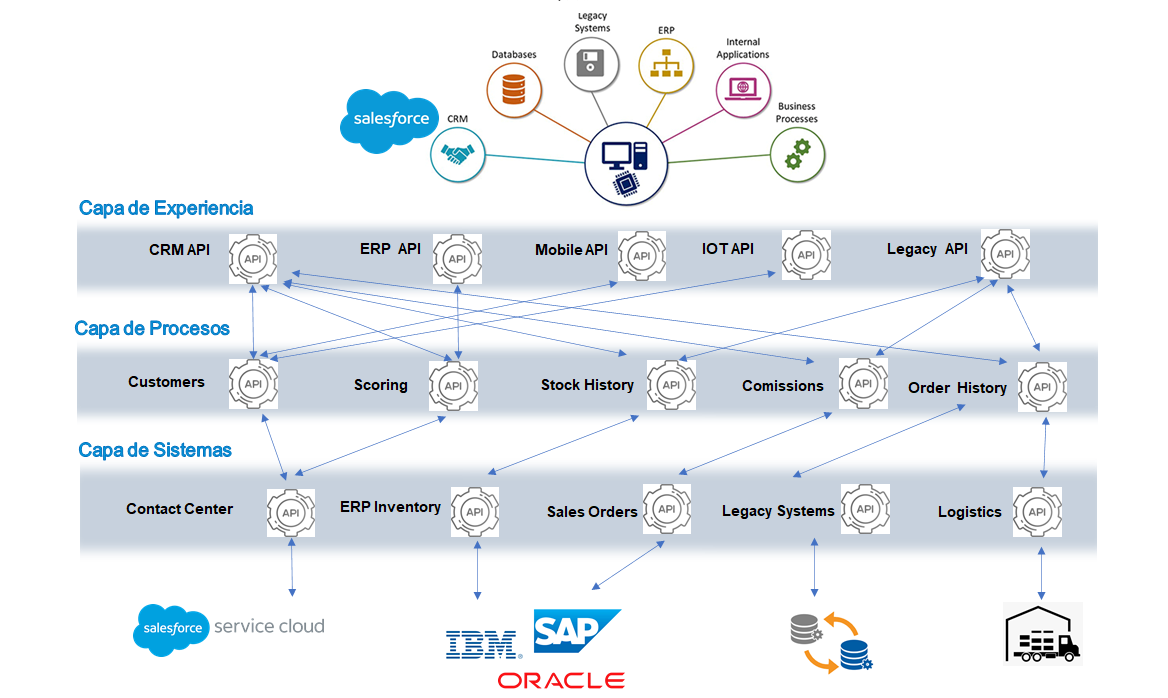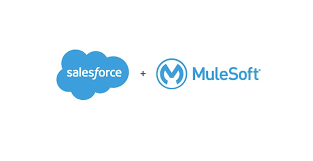Salesforce and the Ecosystems of the Digital Supply Chains

Although there are many types of businesses and organizations, many of them are different from each other, and we can observe that traditionally their supply chains have been lineal. They were lacking in synchronism, with little digitalization, with delays in integrations, and without much visibility and collaboration between the processes and systems of the connected departments and / or companies.
Currently, these supply chains are getting transformed into digital chains and network which are much more dynamic and interconnected. This is where a greater number of processes, participants and partners can be integrated, thanks to the convenience, reliability, interconnection and exchange of transactions and information, paired with organizations that are now more mature and opened to technology.
MuleSoft’s Anypoint Platform will be the enabler of the integration of digital value chains and for the democratization of innovation.
Processes affected by this change of scene are multiple, and can affect several departments of an organization: procurement, research and development, production, planning, operations, distribution, marketing, commercial, loyalty, customer and support services, etcetera.
Organizations have realized that it is of vital importance and a strategic factor, to be able to integrate processes, sub-processes, systems and data, both internal and external, in an agile, flexible, multi-directional way. But also in real time, automated and capable of performing and storing a bigger volume of transactions and information between:
- Companies / Ecosystems of the digital Supply Chains
- Processes and sub-processes both internal and external.
- Various information systems, sources and types of data.
- Multiple devices.
- Apps and products from digital services.
It is important that all of those processes can be done in a safe way, coordinated, with reliable data (veritable and updated), and with the necessary transparency and audits.
Thus, and with right architecture and design, we will allow a transition towards transforming digital processes, in pursuit of offering the best products or services, thanks to the availability of the necessary information in each of the interactions and systems used by employees, clients and collaborators.

Open architectures and integration platforms are enablers and strategic elements of the Digital Supply Chains. They should support information systems, digital processes and their integration and programming interfaces (APIs) because all of them can have a great impact in efficiency and operational excellence, and also in innovation and in the perceived value and digital experience of customers, in data analytics and in the resilience of processes.

As we mentioned in another article, we underlined that thanks to digitalization and interconnection of the Digital Supply Chains’ processes, digital transformation initiatives, alongside with open architectures and good integration platforms of processes and systems, they have a greater capacity for innovation, provide greater value, and are more sustainable and resilient.
We could see companies’ data and information (the one they generate on their own but also the needed from external sources), and their Digital Supply Chains, as the necessary “water” that flows through their “digital pipes” (processes and interfaces). To make this happen, these pipelines have to be well designed and connected, need the right permissions, have to be well maintained and need the capacity, flexibility, connection and scalability demanded.
Organizations may have hundreds of applications, ERPs, CRMs, e-commerce and legacy systems, integrations with third-parties… And we they grow and need new systems or integrations with other supply chains, this issue gets complicated, because we should ideally design future architectures of integration, and this processes of evolution and migration must be done properly.
We should also consider that the difference between many companies comes or will come from their capacity to manage, and develop in time, the functionalities and integrations that are needed and demanded by some business areas. These must be easily reusable for all the different channels, clients, brands, products, etcetera. Additionally, the internal innovation capacity will come from the capacity and agility that we have, to use the innovations and integrations that some companies have already developed, and that allow their consumption and integration with other companies.
These initiatives and architectures require and integration and connectivity strategy based on APIs (API-led strategy), in order to connect data, applications, business processes systematically, through reusable APIs, unlocking and extracting data from specific systems. These are the benefits:
- Decrease in complexity and point-to-point integrations.
- Higher visibility and reusability of integrations and developments; exposure of internal / external functionalities as services, both in the internal Digital Supply Chains, as in others from other organizations.
- Greater agility and speed in integrations development and management.
- Protection of the investment made in integrations, with less stiffness in architectural changes.
- Less dependency and coupling of the integrations made in certain systems.
- Improved quality and reliability of data.
- Acceleration, flexibility and support in digital transformation processes.
- Increased scalability, reliability and resilience of integrations, since they must be prepared for possible contingencies.
A few years ago, the need for middleware systems like Mulesoft arose. In fact, Salesforce recently performed the strategic acquisition of Mulesoft.
Mulesoft, as an integration and orchestration platform (MuleSoft’s Anypoint Platform), allows any application to be integrated. It also brings the possibility of these applications to exchange or share their data / information, eliminating the complexities of integration of internal and external applications in Digital Supply Chains, independently of the typology of the systems to connect (Salesforce and all its clouds, SAP, AWS, Microsoft, Oracle, etc.)

Mulesoft is a totally scalable platform, which allows the design, management and sharing of integrations, services and APIs, through different modules (Anypoint Design Center, Anypoint Studio, API Manager, etc.). This fact brings great support in the life cycle of application networks of digital supply chains.

With Mulesoft we can integrate any internal or external application, creating connected experiences and transactions, and therefore avoid the usual concerns with integrations, such as: Integration with legacy systems and / or other public / private clouds, lack of data quality / synchronization, high cost in maintaining applications and their integrations in multiple and heterogeneous systems, compliance with GDPR regulations, etcetera. It will allow us to focus on the integration and orchestration of internal / external processes, on innovation, reducing the ‘time to market’ of digital initiatives, improving the return on investments and adding value, protecting developments, as well as, the reuse of developments / services / components already developed and in their integration with others. It also provides security and governance of the integrations, and a great resilience of the integration processes in the Digital Supply Chains.
As in any technology, it is necessary to have good training plans and talent recruitment. Those will allow us to democratize the consumption of data, services and systems, with a good design and architecture in MuleSoft’s Anypoint Platform. It will be the enabler of the integration of digital value chains and for the democratization of innovation.
Did you find this article interesting? Share it!
Maybe your friends will also enjoy this.




